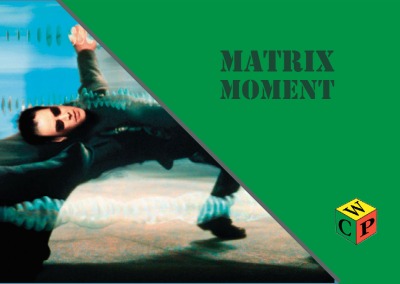In 2001 while working as a Child and Family Therapist in a public mental health agency I quickly learned that teaching traditional Cognitive Behavioral Therapy (CBT) to a group of depressed, anxious and angry adolescents made their eyes glaze over. CBT is a valuable, evidence-based mode of therapy chock full of skills but if you’re not speaking the language of your audience you’re….. well, you’re screwed…..that’s what you are. Trust me, you do not want to be the lone adult in a room of fifteen to twenty emotionally dysregulated and bored teenagers. Whenever I could speak movies, music and video games I could effectively capture their interest.
If you have never seen the 1999 movie The Matrix, make time to watch it as soon as you can. It feels even more applicable today than it did then (think social media). If you have seen it, you will be very familiar with the scene I am about to reference.
At a crucial point in the film the main character, Neo, played by Keanu Reeves is being shot at. It is an iconic piece of film history. Everything suddenly goes into super slow motion – Neo, the bullets, the bad guys – and our hero is able to defy time and gravity to lean out of the bullet’s path and watch it slowly go past.
I used this scene as a visual when teaching my adolescent group how to handle tough situations such as a verbal put down from a peer or a confrontation with a parent. If they could successfully slow the moment down and visualize themselves dodging the triggering event and letting it slide on by, they could buy themselves time to think. And time to think for them could mean the difference between an appropriate response or a lot of seriously unpleasant consequences.
The technique works just as well for adults. Your kids being demanding and entitled? Significant other stressed out and barking at you? Boss insisting you drop your life and work through the weekend on a project that a co-worker dropped the ball on? Take a Matrix moment and let it all slide by you in slow, sloooow motion. Take a good long look at it as it floats past. This may make the speaker somewhat uncomfortable. That’s OK. It’s not your job to rescue them. Chances are they did not take a Matrix moment before they spoke.
This pause in no way means that you are being passive. You are gathering yourself. You breathe. Then you breathe some more. Great big cleansing, thoughtful breaths. You are simply allowing the situation to hang there for a moment or two before you respond. Sometimes the pause is enough by itself to prompt the speaker to rephrase. Either way, you will be centered and balanced and able to respond in a healthy manner.

